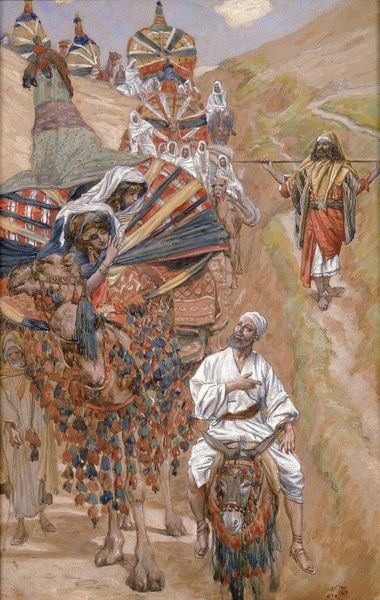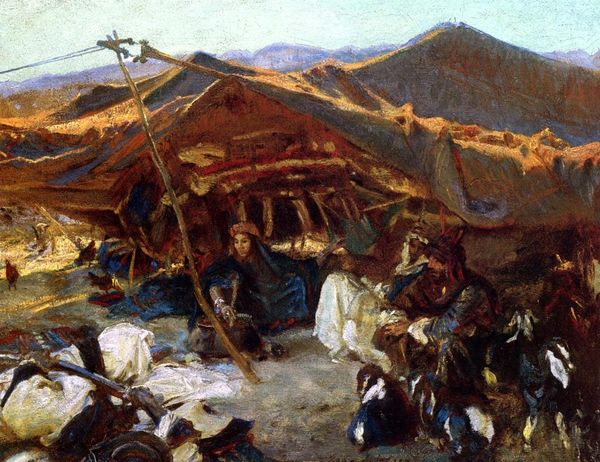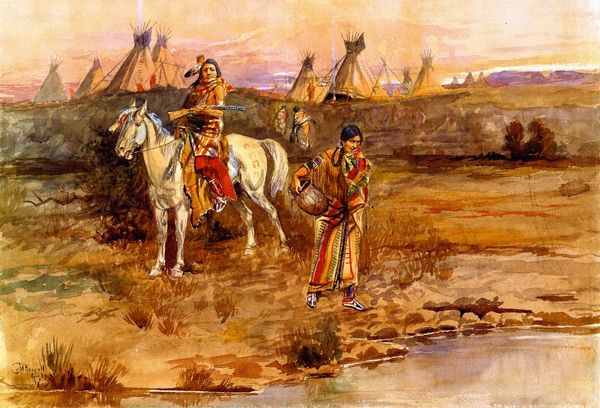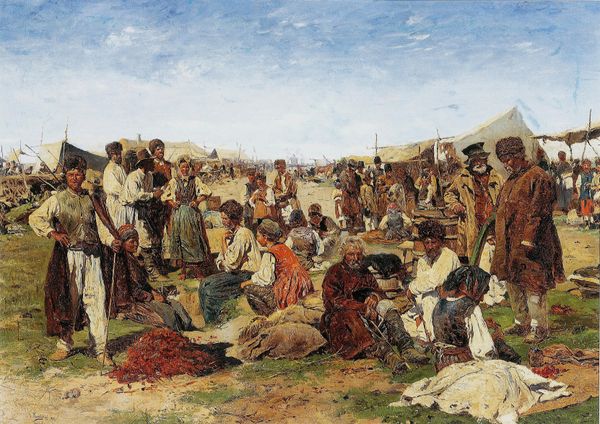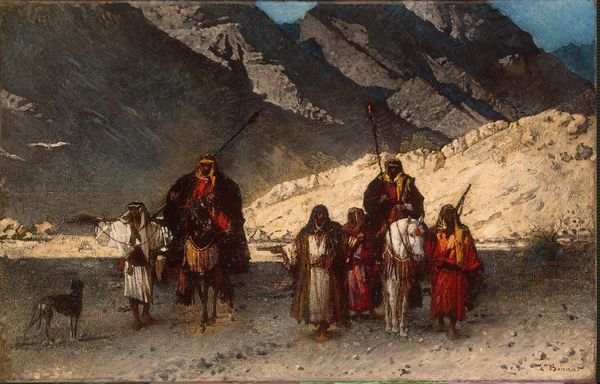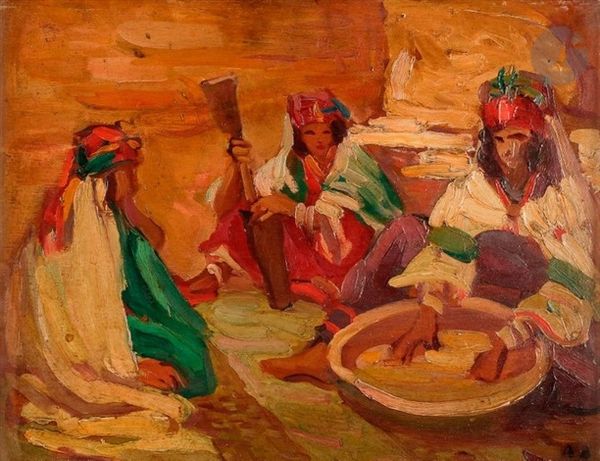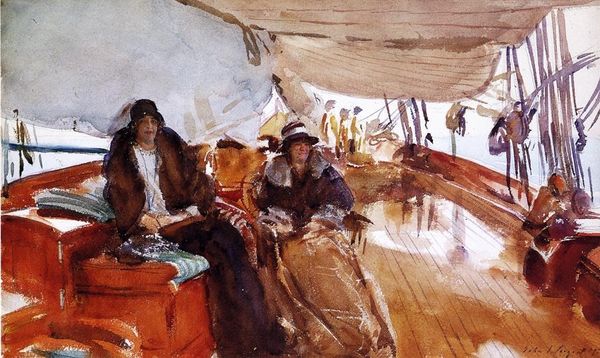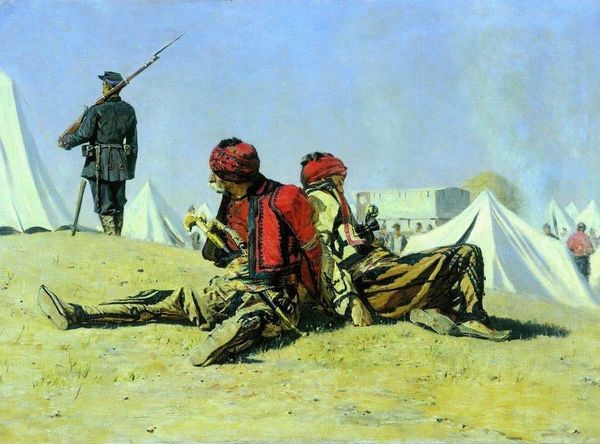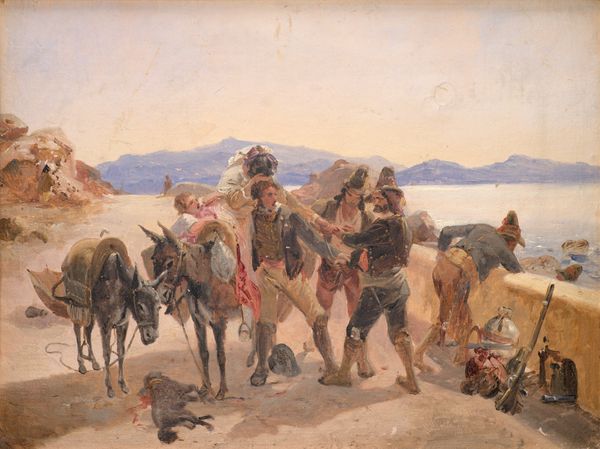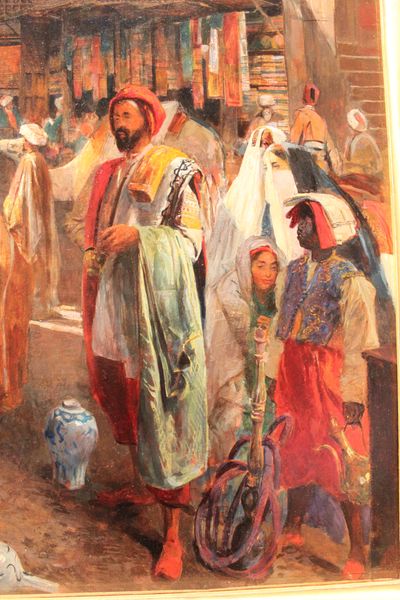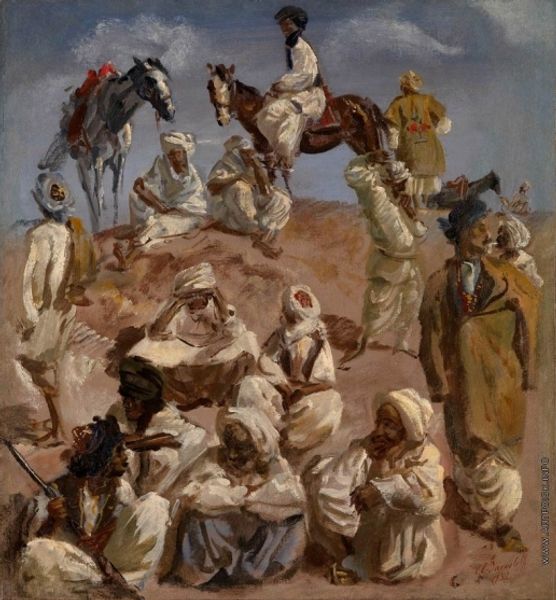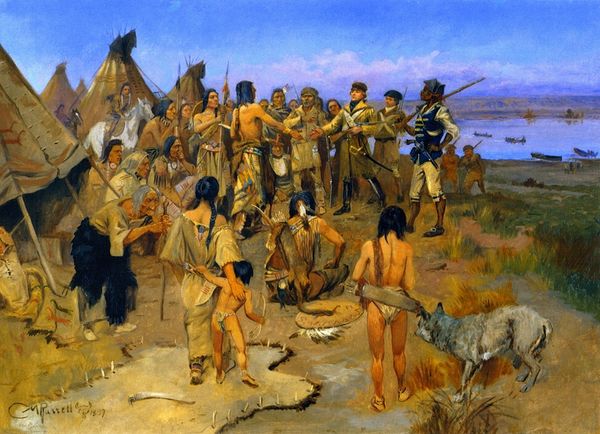
Copyright: Public domain
Curator: Let’s turn our attention to John Singer Sargent’s “Bedouin Camp,” painted in 1906 and held here at the Brooklyn Museum. The first impression is striking—the washes of color, the dynamic yet relaxed composition. Editor: There’s an undeniable Orientalist gaze here, isn’t there? The way Sargent's loose watercolor brushstrokes attempt to capture the exotic ‘other.’ But also consider the labor—the production of these paints, brushes, the specific kind of paper he's chosen… All tools shaped by colonial trade routes and resource extraction. Curator: A fair point. Yet, if we look at the image formally, notice the composition—the figures arranged in receding planes, how he uses light and shadow to create depth and visual interest. Observe the complex arrangement of forms; see how each brushstroke operates as a vital part of the structural integrity, all anchored through this limited palette, it almost renders a sculptural effect to the people. Editor: Indeed, a visual tension. I wonder about the unseen labor involved. Someone, or perhaps many, were employed to grind those pigments, weave the fabric that became the tents, manage and tend the camp’s logistics. And what narratives do the people within hold regarding those global connections? Curator: To ignore Sargent’s orchestration of hue and shade would be to reduce art to simple sociological treatise, yet the art speaks—consider the white garments versus the brown complexion. The semiotics embedded in such formal arrangement are very loud to disregard. Editor: Well, let’s not forget the art market itself. Who commissioned or bought this? What were their values, and what fantasies about the Orient did Sargent fulfill through his deft manipulation of watercolor, which, mind you, has been democratized through industrial production to be accessible and cheap at this time? The economic realities shaped its creation just as surely as Sargent's eye. Curator: Perhaps both elements are permanently intertwined. One gives shape and resonance, while the other allows material realization. A worthwhile juxtaposition. Editor: An intersection we should continue to explore as it shapes not just art but culture in its entire material existence.
Comments
No comments
Be the first to comment and join the conversation on the ultimate creative platform.
